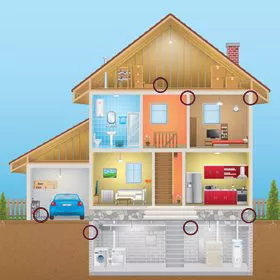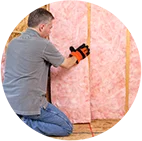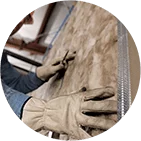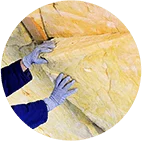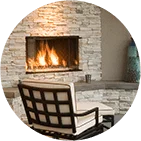- 600 S. Vincent Ave. Azusa, CA 91702
Attic Insulation in San Diego
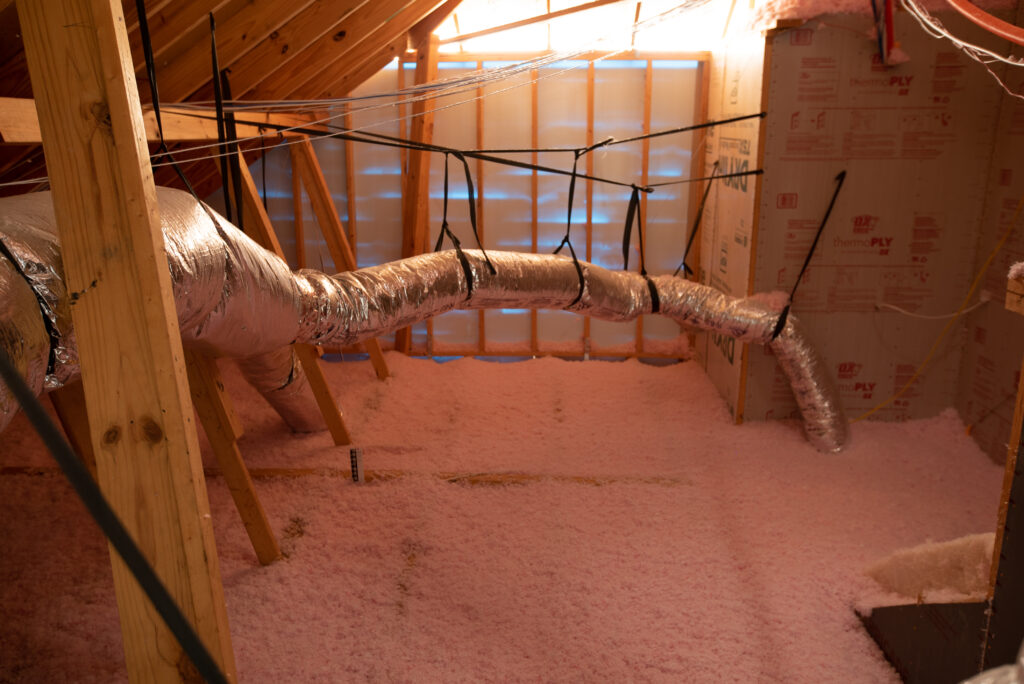
The attic is the first place you should look when it comes to maximizing energy efficiency and saving money with insulation. Insulating your attic (including knee walls) is one of the easiest ways to make your home more energy-efficient.
As you probably know, hot air rises, making attics one of the biggest sources of heat loss in your home.
Expert Home Attic Insulation Contractors
If you’re looking for residential insulation in San Diego, OJ Insulation can handle all your needs. Working with us means you get:
- Over 25 years of insulation experience
- Honest insulation recommendations for your home
- Competitive pricing on all home insulation
- Professionalism and courtesy
- Free home insulation estimates
Start your attic insulation project today by calling 800-707-9278 or contacting our contractors online for a free estimate.
Benefits of Insulating Your Attic
Although you may not go up in your attic every day, it doesn’t mean you should overlook the space when it comes to insulating your home. If you fail to install attic or loft insulation, your home — particularly the second story — will be much hotter and more uncomfortable in the summer.
Insulating (or replacing existing insulation in) your attic helps:
- Reduce your utility bills and maximize your home’s energy efficiency
- Make your home a more comfortable space with more consistent temperatures throughout
- Improve the efficiency of your heater and AC since they won’t have to work as hard to regulate the temperature
- Reduce noises on different levels inside, which is especially useful if your attic is used as a living space
- Contribute to healthier air quality in your home
What’s the Best Insulation for California Attics?
Our southern California home insulation experts typically recommend radiant barrier insulation for attics. Radiant barrier insulation (or foil insulation) is a good option for attics because it increases your home’s ability to reflect, rather than absorb, the sun’s energy. The most cost-effective option would be to combine a radiant barrier with blown insulation.
However, there is no “right” type of attic insulation. We install a variety of insulation in attics:
- Fiberglass insulation effectively stops heat transfer into a colder area (heat leaking out of your warm house into the cold winter air).
- Cellulose insulation has similar qualities to fiberglass and is great for re-insulating all areas in your home, including the attic.
- Radiant barrier insulation, as mentioned, helps your home reflect heat from the sun, keeping your home significantly cooler.
- Spray foam insulation is extremely energy-efficient because of its high R-value and is great for insulating hard-to-reach places because of the liquid spray application.
OJ Insulation even offers environmentally friendly insulation options.
Can You Install Spray Foam in Attics?
Spray foam insulation can be an excellent way to seal and insulate an attic, as long as it’s done correctly. With R-values of 6.0 per inch for closed-cell forms and about 3.6 per inch for open-cell versions, spray foam offers excellent insulating performance.
Because it expands to fill any gaps or voids in the framing and provides impressive air-sealing performance. This can significantly reduce your heating and cooling costs and make your home more comfortable.
On the other hand, spray foam is a bit more costly than other types, and there can be problems if installed improperly, such as mold and moisture issues. If closed-cell spray foam is installed on the underside of the roof deck, it may shorten the life of your roof, though open-cell foam can breathe enough to be used successfully.
A professional installer, like our experts at OJ Insulation, can avoid these pitfalls by providing a proper, energy-efficient installation.
Interested in spray foam insulation for your attic? Call (800) 707-9278 or contact us online to speak with our home insulation experts.
Where To Use Spray Foam in an Attic
Open-cell spray foam can be used on the underside of the roof deck, in knee walls, in eaves and in the attic floor. Closed-cell spray foam should only be used in the attic floor and knee walls. Using it on the roof deck will prevent the attic from venting properly and could harm the roof unless airspace is added between the roof and the insulation.
If you’re insulating the attic floor with spray foam, any existing insulation should be removed to avoid condensation and air quality issues. Airspace should also be maintained around hot surfaces like appliance flues, chimneys or non-contact-rated recessed lighting.
To learn more about the installation requirements of spray foam or other types of insulation, call our experts today at (800) 707-9278.
New Construction & Retrofit Attic Insulation Installation
The OJ Insulation team installs retrofit (re-insulation) and new construction attic insulation. We have experience installing many different types of insulation in a wide range of attic styles and can handle all your insulation needs. Our southern California installation team has you covered.
Contact Us for Attic Insulation Installation in San Diego
In addition to being properly insulated, an attic should also be sealed and ventilated. A home insulation company can give you more specifics on attic insulation, so you can be sure your home doesn’t lose any more energy.
Call 800-707-9278 today if you have any questions or are ready to start your insulation project in Los Angeles, San Diego or the Bay Area.
Frequently Asked Questions
Should I install radiant barrier insulation even if I already have attic insulation?
Yes, you may want to install radiant barrier insulation under your roof, even if you already have insulation in the attic. In southern California and other warm climates, installing both a radiant barrier and thermal insulation in your attic can be cost-effective.
How much insulation do I need to install?
That depends on a few factors, the biggest two being the age of your home and the climate zone you live in. The amount of insulation you need to install will also depend on the type of HVAC system you have, the areas of your home you need to insulate, etc.
What does R-value mean?
The R-value of a type of insulation measures how well it stops heat transfer; the higher the R-value, the better. However, it depends on the insulation’s material, thickness and density.



